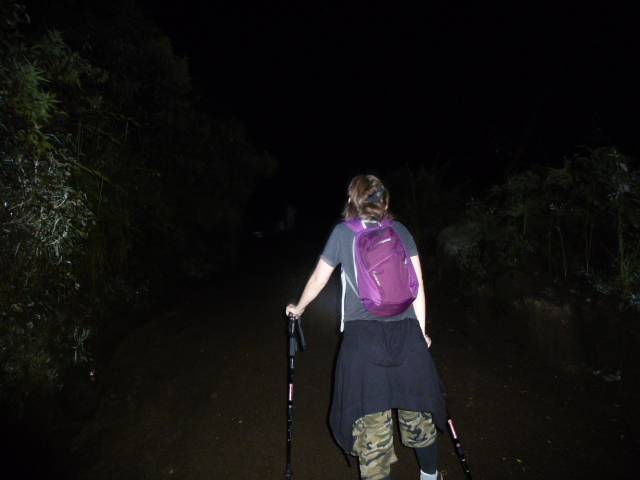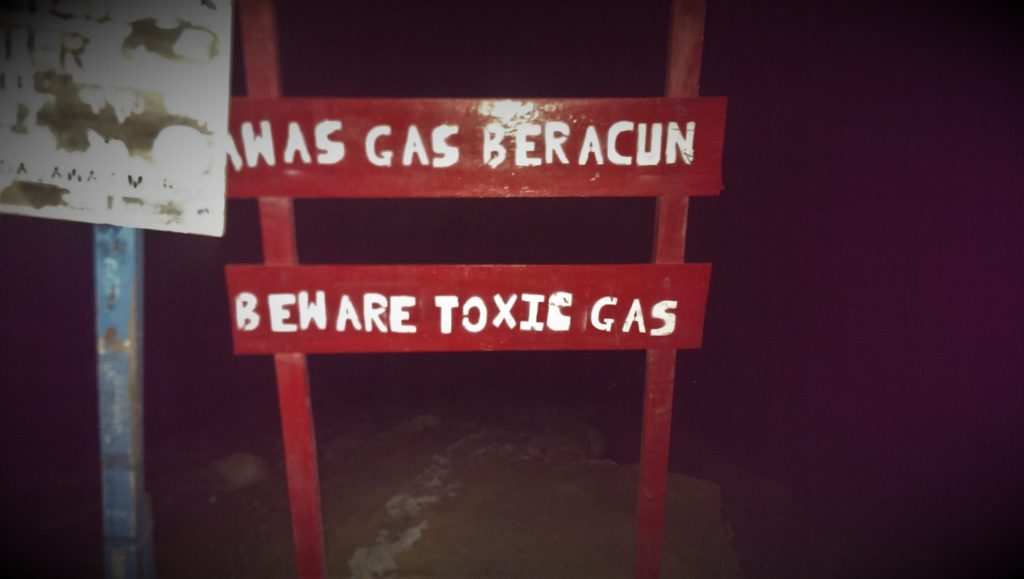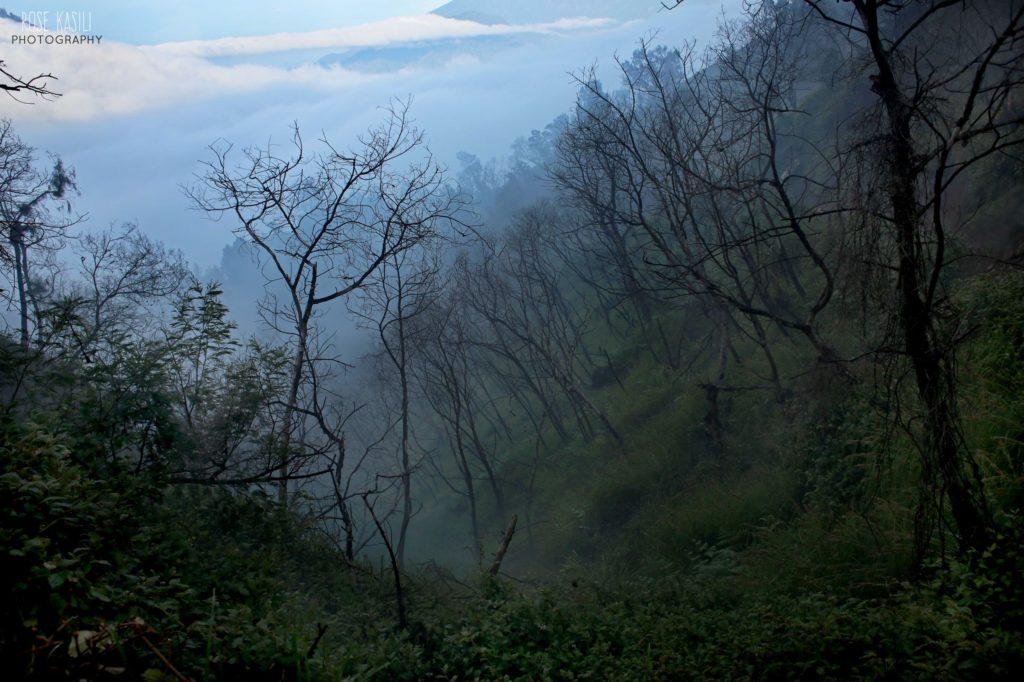The Blue Flame Crater Kawa Ijen is a natural phenomenon
Kawa Ijen? A remote crater? That spits out blue flames? I can trek to see it? Sign me up!

When I heard how the Kawa Ijen mountain spits 600oC blue flames out of it’s core, I had to put it on my list of top things to experience in Indonesia. It sounded too incredible to be true. Here I’ll tell you how to get there and offer some tips and advice on what to do and not to do.
The closest town to Kawa Ijen is Banyuwangi and if you’ve come on the ferry from Bali and docked in Ketapang, you’re nearly there! A quick taxi ride from the ferry port will have you there in no time.
We had booked to stay at Pepito Guesthouse and I can’t speak highly enough of the hosts. They are super friendly and were happy to meet us at the ferry port and transfer us to our accommodation. As well as running a great place to stay, the host’s brother runs Blue Flame Tours.
"Kawa Ijen is still an active sulphur mine"
Different price options are available and we chose ‘Option A’. This was a pick up from Pepito Guesthouse by a private driver, transport to Kawa Ijen, a gas mask (more on that later), water and a snack. You can leave at a time of your choosing. I recommend just before midnight as this ensured we could start the trek at 1AM. You might be thinking who treks up a mountain at 1AM, but you need to be there EARLY as it’s a hell of a trek. You also avoid the crowds and have the best chance of seeing the blue flames!

We paid the entrance fee (100,000 – 150,000 IDR), strapped torches to our heads and off we went, hiking poles in hand. What’s remarkable is that Kawa Ijen is still an active sulphur mine, but this isn’t on an industrial level. The workers bust their balls! Trekking beside you up the mountain with wicker baskets on their shoulders, pick axes in hand and wheelbarrows pushed in front of them. You know this isn’t a walk in the park when even the workers stop to catch their breath. Oh and did I say it’s 3KM to the top? And that it’s very steep? You’ll want to pace yourself and stop to catch your breath too!
Some workers will offer to guide you up the crater for a fee. To be honest there’s so many workers heading up for their shift you don’t need a guide and can just follow the crowd.

Be careful; the path is winding and you can’t see the cliff edge. Signs will occasionally warn you not to step forward.

When you reach the top of the crater, the ground flattens out and you feel like the hard work is over. Is it heck! You know have to descend in to the crater itself. This is the point at which you’ll want to don your gas mask (you’ll soon see why).

"One foot wrong and we're talking cuts, bruises and broken limbs"
On the descent I’m glad we had walking poles. The ground is steep and rocky. One foot wrong and we’re talking cuts, bruises and broken limbs. We slowed down our pace and played it safe. Not the workers though. They will run past you with fearless abandon, knowing where to place each foot to avoid certain injury.

As you trek down, the blue flames become visible. You almost can’t believe what you’re seeing. From a distance it looks like someone left the gas cooker on. As you get closer the flames grow larger and rip in to the air. Standing meters away you are experiencing a phenomenon like nothing else.

And the smell!! Even with the gas mask you’re not going to believe the stench of sulphur rising from crater! But it isn’t just your nose that takes a beating. As soon as the wind starts to blow, shouts ring out and everyone needs to turn the other way and duck and cover. You’ve probably never had clouds of sulphur blow in to your face, but you’ll know about it when it happens! You’ve heard of mustard gas right? Well a key ingredient is sulphur and whilst Kawa Ijen is far from being a chemical weapon, I think you get the idea. This stings like hell!

Now a word of advice. You know how we set off at 1AM? I’m glad we did. We were the first people to arrive at the crater. As we looked away to shield our eyes from gusts of sulphur, we observed a stream of lights in the distance. This was other other people making the trek. But they were too late! The weather started to turn and within 20 minutes the flames were no longer visible. Imagine if you’d made all that effort and seen absolutely nothing but sulphur clouds (by the way, it IS a chance worth taking!). Blue Flame Tours advised us to set off as early as possible and I’m so grateful for this advice.
With the bad weather it was now time to return. Remember, this isn’t an industrial mine so there’s no lift back up. You must trek the same rocky path from whence you came.
"We were up a misty mountain and well and truly lost!"
The fun isn’t over though. A further experience on Kawa Ijen is to watch the sunrise over the crater. Back at the top of the crater follow the rim up a rocky hill (or ask a mine worker for directions). This is where it got funny. As the weather had started to turn, visibility was poor. We found a place to sit for a while, but realised there was no way we’d see a picture postcard sunrise. In fact, although it was now getting light we were struggling to see ten feet in front of us.

Did we come from that way? Wasn’t it over there? Did we see this tree before? We were up a misty mountain and well and truly lost! It looked like Stephen King’s ‘The Mist’.
Mental sat navs engaged, we put our collective best foot forward and hoped for the best. 15 minutes later we heard voices and followed our ears. A few falls later, we saw life and started our 3KM descent back to the park entrance.

The path down is now clear and the mystical views in daylight show what was before hidden by darkness. Some of those hard working miners will also be heading back down. If you’re happy to part with your cash, they’ll let you hitch a ride in their wheelbarrow!

SHARE THIS POST
Top Tips for Kawa Ijen
What to bring:
- Sweater. All that exercise can be hard work, but it can also be very cold.
- Gas mask. That’s a gas mask, not a dust mask. This is essential! Your tour guide should provide you with one, or hire one at the entrance (but expect to pay 50,000 IDR for it).
- Water and snacks.
- Headlamp.
- Trekking poles (if possible) to steady yourself on the descent.
- Hiking boots. Now’s not the time for flip flops!
- You don’t need a guide, it’s easy to find your way.
- You probably noticed this post doesn’t have any pictures of the blue flame! We were warned in advance that sulphur fumes can completely destroy the insides of your camera. Don’t change your camera lens in the crater and use your mobile phone for pictures if you want to play it safe.
- If you came from Bali, although it is only a short trip, Java is one hour behind. Don’t forget to adjust your watch.
How do I get to Kawa Ijen?
You can arrange a tour in Banguwangi. I recommend speaking to Pepito Guesthouse and arranging it through them. Our driver was exceptional. He was happy to drop us off and have a sleep in his car until we returned at 7AM.
How much does it cost to visit Kawa Ijen?
The tour is 175,000 IDR if sharing with others, or for a private transfer of at least two people it’s 325,000 IDR each. This includes transport, a gas mask, water and a light snack.
You will need to pay the park entrance fee on top which is 100,000 IDR on weekdays and 150,000 at weekends.
How long should I spend at Kawa Ijen?
Set off early so you can take your time. Aim to start the trek no later than 1AM. It can take up to two hours for the ascent, 45 minutes on the crater descent and half an hour at the flames. You’ll be doing all this again in reverse, but the route back down takes less time in the daylight. Factor in a further hour if you’re going to try and catch the sunrise over the crater too! You’ll be back at the park entrance by 6-7AM.